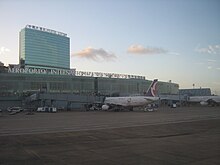
Hong Kong has a highly developed transport network, encompassing both public and private transport. Based on Hong Kong Government's Travel Characteristics Survey, over 90% of daily journeys are on public transport, the highest rate in the world. However, in 2014 the Transport Advisory Committee, which advises the Government on transportation issues, issued a report on the much-worsened congestion problem in Hong Kong and pointed at the excessive growth of private cars during the past 10–15 years.
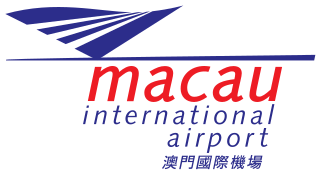
Macau International Airport is an international airport in the special administrative region of Macau, situated at the eastern end of Taipa island and neighbouring waters which opened for commercial operations on 9 November 1995, during Portuguese administration of the region.
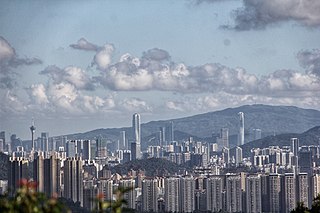
Zhuhai, also known as Chuhai, is a prefecture-level city located on the west bank of the Pearl River estuary on the central coast of southern Guangdong province, People's Republic of China, on the southeastern edge of the Pearl River Delta. Its name literally means "pearl sea", which originates from the city's location at the mouth of the Pearl River meeting the South China Sea. Zhuhai borders Jiangmen to the west, Zhongshan to the north and Macau to the southeast, and shares maritime boundaries with Shenzhen and Hong Kong to the northeast across the estuary.

A border checkpoint is a location on an international border where travelers or goods are inspected and allowed passage through. Authorization often is required to enter a country through its borders. Access-controlled borders often have a limited number of checkpoints where they can be crossed without legal sanctions. Arrangements or treaties may be formed to allow or mandate less restrained crossings. Land border checkpoints can be contrasted with the customs and immigration facilities at seaports, international airports, and other ports of entry.
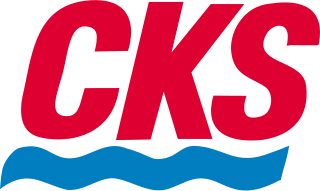
Chu Kong Passenger Transport Co., Ltd. is a subsidiary of Chu Kong Shipping Enterprises (CKS) and operates ferry services between Hong Kong and cities in Guangdong province, China, as well as Macau.
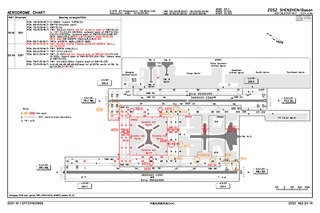
Shenzhen Bao'an International Airport is an international airport serving the city of Shenzhen in South Central China’s Guangdong province. It is on the east bank of the Pearl River near Huangtian and Fuyong villages in Bao'an District, 32 km (20 mi) northwest of the city centre. It is a hub for Shenzhen Airlines and Shenzhen Donghai Airlines and for cargo airline SF Airlines, China Southern Airlines and Hainan Airlines. The airport also serves as an Asian-Pacific cargo hub for UPS Airlines. The airport underwent major expansions in the 2010s, with a second runway opening in 2011, and a new terminal in 2013.

The Hong Kong–Macau Ferry Terminal is a ferry terminal and heliport, centrally located in Hong Kong. It is also known as the Macau Ferry Terminal, the Hong Kong-Macau Ferry Pier or the Shun Tak Heliport, and has an ICAO code of VHSS.

The Outer Harbour Ferry Terminal, also known as the Macau Maritime Ferry Terminal, Macau Ferry Terminal or Hong Kong-Macau Ferry Pier in Chinese, is a ferry terminal located at Porto Exterior, Sé, Macau, China.

Hong Kong China Ferry Terminal is a ferry terminal, located at China Hong Kong City, 33 Canton Road, Tsim Sha Tsui, Kowloon, Hong Kong. It is one of three cross-border ferry terminals in Hong Kong.
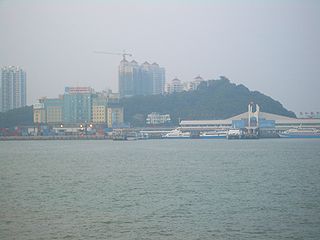
The Port of Zhuhai is the port of the prefecture-level city of Zhuhai, on the west side of the Pearl River estuary in the Chinese province of Guangdong. The Port of Zhuhai is composed of seven main port areas: Gaolan, Wanshan, Jiuzhou, Xiangzhou, Tangjia, Hongwan and Doumen. The main areas are the Jiuzhou Port Area to the east of the city, and the Gaolan Port Area to the west. As of 2012, the port had 131 berths, 126 production berths, of which 17 were deep-water berths over 10,000DWT.
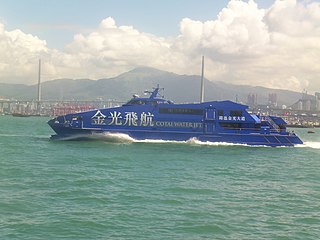
Cotai Water Jet is a company that operates high-speed ferry services between the special administrative regions of Macau and Hong Kong. It is one of the two companies operating high-speed ferry services between the two territories – the other one being TurboJET.
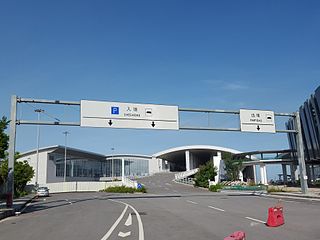
The Taipa Ferry Terminal is located in Taipa, Macau SAR. It is located in the reclamation area of Pac On and is adjacent to the Macau International Airport. The terminal provides high-speed passenger ferry services from Macau to Hong Kong, Zhuhai, Shenzhen and Dongguan.

The Gongbei Port is an immigration and customs checkpoint located in Zhuhai in mainland China, on its border with Macau. It is operated by the Bureau of Exit and Entry Administration of the Ministry of Public Security, and the General Administration of Customs.
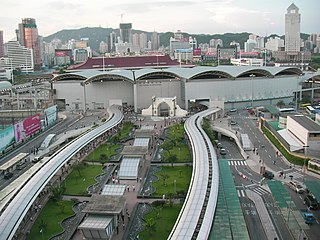
The Posto Fronteiriço das Portas do Cerco is an immigration and customs checkpoint in the Portas do Cerco area in northern Macau, on its border with mainland China's Zhuhai.

Skypier Terminal is a cross-border facility that includes a ferry pier and a coach bay integrated within Hong Kong International Airport, Chek Lap Kok, New Territories, Hong Kong. It is operated by Hong Kong International Airport Ferry Terminal Services Limited, a joint-venture company between Chu Kong Passenger Transport Co., Ltd and Shun Tak-China Travel Ship Management Limited. At this building, passengers aboard can transit from Hong Kong International Airport to piers in the Pearl River Delta of Guangdong Province or vice versa, without immigration and customs clearance through Hong Kong. Passengers can also transit to Macao through coaches or vice versa, without immigration and customs clearance through Hong Kong.

The Inner Harbour Ferry Terminal is a passenger pier in São Lourenço, Macau, China. The ferry terminal is dedicated for ferries to the nearby Wanzai, Zhuhai.

Shekou Ferry Terminal was a ferry port located in Shekou, Nanshan District, Shenzhen, China. It allowed for direct ferry connections from Shenzhen to destinations across the Pearl River Delta. It was operated by China Merchant Shekou Ferry Terminal Service Co., Ltd. It was also known as Shekou Port Ferry Terminal. It was the waterway passenger transportation junction of Shenzhen. Ferry operations were operated by TurboJET and CKS Ferries.

Shekou Cruise Center, also known as the Shekou Ferry Terminal and the Shekou Prince Bay Cruise Homeport, is a cruise terminal located in Shekou, Nanshan District, Shenzhen, China. It runs direct ferry connections from Shenzhen to destinations across the Pearl River Delta. It is operated by China Merchants Shekou Ferry Terminal Service Co., Ltd. Ferry operations are operated by Xunlong Ferries, TurboJET and CKS Ferries. It can also handle cruise ships docking and replenishment, and is the first cruise terminal in China. This facility replaces the former Shekou Passenger Terminal and is part of a larger urban renewal and redevelopment along Shenzhen Bay.
China Merchants Shenzhen Xunlong Shipping Co. Ltd., otherwise known as Xunlong Shipping or Xunlong Ferries, operates high speed catamaran ferry services from Shenzhen, Guangdong, China. It is a part of the China Merchants Group.










